August 12, 2020 / admin / 6 Comments
In preparation for Microsoft Flight Simulator 2020 (MSFS2020), it is time to bid farewell to P3Dv4.5 and all the associated add-ons. While my P3Dv5 instance is still awaiting the availability of the PMDG Boeing 777, I have enough add-ons in v5 to keep me fully entertained until such time as the Triple Seven can be installed.
P3Dv4.5 Was Amazing
I joined the P3D bandwagon when P3Dv2 arrived on the scene and in my opinion, while v5 is finally proving to be stable….P3Dv4.5 was just simply rock solid. Almost from day one, the much anticipated 64 bit release showed us exactly what a flight simulator should be and remained almost trouble free for just over three years. However, between the P3Dv4.5 install and all the associated add-ons adding up to over 275GB of SSD space, I need to remove it to make room for the new Microsoft Flight Simulator 2020 which is planned to release in just a few days from now (18 August).
A Bit of a Three Ring Circus
My current gaming machine was designed and built with the future in mind. At just over two years old now, at the time of the build I installed a 1 TB M.2 SSD as the main drive. I moved over a few older 500GB SSD drives along with a 500 GB SATA drive for video work. To maximize the performance of P3Dv4, it was installed on the 1 TB M.2 SSD along side the Windows OS. I have one 500 GB SSD dedicated to Steam content such as Farming Simulator, Truck Simulators etc. and use the remaining SSD’s for backup and non-gaming content.
When I installed P3Dv5, I installed it onto one of the SSD drives and it’s performing just fine. But I believe I’ll want MSFS2020 to go onto the 1 TB M.2 SSD for maximum performance. So to make this happen, unfortunately I must sunset P3Dv4.5.
It really isn’t that big of a deal as I’ve been using P3Dv5 exclusively now for over a month. Now that I have P3Dv5 dialed in, the performance is better than what I had been experiencing with 4.5 so now is just a good time to say goodbye.
MSFS2020 Requirements
According to the published minimum requirements of MSFS2020 as it relates to available disk space, I will need a minimum of 150GB. Clearing out P3Dv4.5 and all its associated add-ons along with doing some additional cleanup, I will easily have over 500GB of free space on my main 1 TB M.2 drive. Certainly more than enough. At least for now.
Looking Forward, Never Backward
While a lot of flight simmers may plan to ditch Prepar3D and X-Plane on day one of the MSFS2020 release, as I’ve stated before…Prepar3D v5 will remain my main simulator for simulating jetliner flights. However, between home DIY projects and other responsibilities I do anticipate flying in MSFS2020 with any of the default GA aircraft as I explore the world flying low and slow. My first flights most likely will be as follows. Depart KAPA and fly over my house and the greater Denver area. Flight number two will probably have me depart EBAW (Antwerp, Belgium) and fly over the area where my in-laws lived along with the Antwerp area. Then who knows? Most likely I’ll hop around between Alaska, perhaps fly around Innsbruk Austria…really the complete world is my option.
Until next time…
Happy Uninstalling and Flying!
Jerry
May 16, 2020 / admin / 0 Comments
As I’ve stated a few times, my Prepar3D v4.5 setup is pretty stable. In the past several weeks, I’ve logged an estimated 200 hours of flight time without a single hiccup. This all changed a few days ago. Let me explain.
I had been running P3Dv4.5 with hotfix 2. When Lockheed Martin released their hotfix 3 back in mid April I made the decision to hold off on updating. I really had no reason to update as I wasn’t experiencing any issues. This decision even became more apparent after I began the process of setting up P3Dv5. However, when I began using the new beta version of ActiveSky (for P3Dv5 functionality) I had been using it for both v4 and v5. After the latest beta update was released it was expecting my P3Dv4 instance to include the hotfix 3 updates. So I decided to go ahead and update P3Dv4.5 to the hotfix 3 update.
BOOM
I installed the hotfix 3 update to P3Dv4.5 and departed Bermuda for Dallas/Ft. Worth. All seemed to be working fine, but began noticing some major performance issues. I began watching my FPS and it would drop from my standard 30ish FPS down to 2, then spike back up and then back down. I dismissed it and finished the flight.
The next day, I departed KDFW for Bozeman and realized this issue didn’t want to resolve itself (not that they ever do). So I began troubleshooting.
The first decision was to update my graphics drivers and software. It had been sometime since I had taken an Nvidia update. I thought…well perhaps this hotfix 3 needed the update. After performing a clean install, I fired up the sim again and still had the same issues.
Next I decided Plan B was in order and I deleted my shaders folder and the P3D.cfg file. This normally chases away all gremlins. However, this time it didn’t. I still had an unusable sim.
Google has ALL the answers
I decided to take to Google and see what I could learn. Of course I found lots of information discussing the steps I had already taken. I kept looking and finally discovered something new. A new tip about deleting the SceneryIndexes_64x folder in conjunction with also deleting the shaders and p3d.cfg file.
Once I completed those steps, I rebooted my PC and fired up P3D. All was once again golden. Actually, I think the sim is performing much better as well.
I’ve documented the details about how to locate the SceneryIndexes_64x folder on my FlightSimHelpers.com website. You can find that info here.
Hopefully my P3Dv4.5 (with hotfix 3) will continue to perform until such time as I move over to P3Dv5.
Until next time..
Happy Flying!
Jerry
October 10, 2019 / admin / 0 Comments
For as long as I can remember, the desire to eke out another frame or three has been the desire for many who constantly stress over FPS (Frames Per Second). I’ve stated my opinion on FPS many times and will do so again. Basically I tune my P3D setup for maximum smoothness. I don’t have stutters, I don’t have blurries (at least not many) and I don’t lose sleep at night over a few FPS here and there. About the only time I even check FPS is during initial setup of the sim or after installing a new airport scenery and my own curiosity gets the better of me.
Snake Oil Everywhere
 For nearly as long as we’ve been chasing the near unobtainable 60FPS in FSX/P3D, many have developed solutions and/or come up with tweaks to the .cfg file claiming/guaranteeing more FPS if you buy this or if you change that. While I’ve tried some of these over the years, I’ve just learned to laugh the rest away as simply being snake oil. If you’re unfamiliar with the term “snake oil”, it originates from far simpler times, when someone who knowingly sells fraudulent goods or who is himself a fraud, quack, charlatan etc. etc. Unfortunately, there’s just very little that can be done to P3D to increase FPS other than lowering graphics settings or investing in higher performance hardware.
For nearly as long as we’ve been chasing the near unobtainable 60FPS in FSX/P3D, many have developed solutions and/or come up with tweaks to the .cfg file claiming/guaranteeing more FPS if you buy this or if you change that. While I’ve tried some of these over the years, I’ve just learned to laugh the rest away as simply being snake oil. If you’re unfamiliar with the term “snake oil”, it originates from far simpler times, when someone who knowingly sells fraudulent goods or who is himself a fraud, quack, charlatan etc. etc. Unfortunately, there’s just very little that can be done to P3D to increase FPS other than lowering graphics settings or investing in higher performance hardware.
Even with the 4th generation of Prepar3D finally taking advantage of the performance advantages of a 64 bit architecture, the application itself continues to be much more CPU intensive than GPU and still struggles to take advantage of multithreading at the CPU level. This means if you simply look at task manager/process manager, you may very well see core 0 is 100% maxed out with the other cores simply appearing to do nothing. Would you go to the grocery store and queue up behind a long line of customers standing at check-out lane #1, when other check-out lanes have no wait? But I digress…
Hyperthreading and Affinity Mask
Depending on what you’re reading, where you’re reading it and who is discussing it…you’ll find different schools of thought regarding hyperthreading and affinity mask settings. With regards to hyperthreading, the term hyperthreading is a technology developed by Intel which essentially doubles the cores on the CPU. I’ve tested with hyperthreading enabled and disabled. At one time I myself believed turning HT off was the better solution. However, as P3D has evolved, the development team at Lockheed Martin have done a better job at getting P3D to utilize multithreading and I personally believe with P3D v4.4 and v4.5 you are better off with Hyperthreading enabled.
Affinity Mask is another tweak/buzz word from many years ago. The tweak was made directly to the .cfg file and was based on the number of CPU cores. Like previously mentioned, there’s very little need with the latest version of P3D to make ANY changes to the .cfg file.
Back to the original question
The subject of this writing was supposed to be about Process Lasso. To be honest, in the late days of FSX and the early days of P3D, (before P3D v4 64bit) the above mentioned tweaks and the use of Process Lasso was something I held in very high regard. Applying these in just the right way would often mean the difference between a smooth running sim (yes, with optimal FPS rates) AND less likely to run into OOM’s or out of memory errors versus throwing your hands up and heading to the corner to cry. However, with my most recent gaming machine build, I’ve found these to be more problematic than not. I’m also not the only one who once swore by all these tweaks to abandon them.
But….but, yes if you have a less powerful PC and struggle to get the most out it then I would strongly suggest giving Process Lasso a try. Process Lasso can be downloaded for free from the bitsum.com website and it’s a 100% safe website/download. Once installed, Process Lasso is easily configured.
In the Process Lasso application, click on the Active Processes tab. With P3D (or FSX) open along with all the normal add-ons you typically during a flight.

The first suggested change is to classify P3D as a High Performance Process. Right-click on the Prepar3D.exe process and select the “Classify as a High Performance process”.

Again, P3D on some CPU’s might gain some performance by setting the CPU affinity to dedicated cores. Typically we would reserve cores 0 and 1 for all other applications and set P3D to the rest.

As you can see below, I’ve set P3D to cores 2 – 11.

The screenshot below is how I set up all other running applications I use alongside P3D.

It’s really that simple. Process Lasso will automatically start and apply these settings each time you startup the PC. I would highly suggest you first establish some performance benchmarks. In other words, load up your sim at an airport and try to setup the exact same conditions for each test. Then apply the settings I’ve suggested above and test again. If you’ve gained a few FPS and all seems to be stable, then leave it and enjoy a few flights.
Bottom Line
Most likely if you have a similar beast of a machine like I do, then most likely these tweaks really aren’t necessary. As I’ve stated above, I’ve tried all the tweaks which once worked to give a slight increase with earlier versions of P3D and FSX, but didn’t see any performance gain on the new machine. As a matter of fact, I’ve experienced some issues during testing and come to find out, many others experienced the same issues.
While P3D v4.5 is still somewhat built on the old ancient FSX foundation, the developers at Lockheed Martin have truly moved the chains in the right direction and I’m confident one day soon we’ll get to where we need to be. Thanks for reading.
Until next time…
Spend more time flying, than tweaking!
Jerry
April 18, 2019 / admin / 3 Comments
Just less than a year ago, I wrote a similar tutorial when version 4.3 was released. I began that article with the words “There seems to be a lot of confusion regarding how to update Prepar3D”. While ten months may have passed, the confusion hasn’t. So as I stated before, I’m going to do my best to provide you a step-by-step guide for how to update Prepar3D. Or at the very least, how I update my own instance of Prepar3D.
About This Guide
This step-by-step guide was written specifically for the Prepar3D version 4.4 to 4.5 update and written/published in mid April of 2019. Lockheed Martin released P3D v4.5 on 9 April 2019. If you are referring to this guide anytime after version 4.5 (v4.6, v4.7 etc.) then this method should also work as well. Unfortunately my crystal ball isn’t working for peering into the future, so who knows how the update process will work for P3D v5 (if there is such a thing). What I’m trying to say here, is content on the Internet tends to live forever and you might be stumbling on this writing a year, two or more from the time I wrote it. Just keep that in mind.
The Update Process
Just a little background for those that may not be aware. I believe, starting with P3D v3.x, Lockheed Martin developed P3D to be somewhat modular in the way one can update and maintain the simulator. This modular setup consists of three main files with the first being the Client, the second being the Content and the third being the Scenery. When Lockheed Martin develops, tests and deploys an updated version to us, we no longer need to completely uninstall the entire P3D application just to take advantages of the updates. In many cases, only the “Client” portion of the update needs to be applied. But you should do your homework to best determine exactly what you need to update to take advantage of all the new bells and whistles available.
Prepar3D version 4.5 Change Log
To aid you in understanding all the changes included in the P3D v4.5 update, please follow this link. Use this information to determine what you want to update.
My Update Process
As I do each and every time a new P3D update is released by Lockheed Martin, I study the change log to determine my action plan. As was the case with the version 4.4 update, I personally am not interested in the updates which have been made to the Content and the Scenery. So this update will be super simple for me, as I’ll only be updating the Client portion. If you desire to update either the Content and/or the Scenery…then go ahead and do so.
Step One
Make note of P3D Settings. Before I perform an update, I typically will start up P3D and take screen captures of all the settings screens. This way, if anything gets changed during the update process…I’ll be able to quickly reset everything back to the way it was before. I like to run P3D with the updated version with the same settings I ran on the previous version first, before tweaking anything. This way I have a better determination on just what improvements were made and how these improvements impact my setup.
Step Two
Download the update files required. As I previously mentioned, I’m only planning to update the Client for v4.5. You’ll need to login to the downloads section of the Prepar3D website with your license or account credentials. Once there, click to expand the individual component downloads section and download the following file: Install_Client.msi. Once downloaded, I typically place all the files into a new folder I create on the Windows desktop for ease of access.

As a side note, if you were interested in updating the Content, you would also need to download the Install_Content.msi along with BOTH the cont1.cab and cont2.cab files. Same would apply for Scenery. You would need to download the Install_Scenery.msi along with all seven of the sceneX.cab files.
If you are planning to update Content and/or Scenery, then just place the .cab files in the same location as you’ve downloaded the Install_Content.msi and/or Install_Scenery.msi files. When you go to run the install on the content/scenery the .msi files will automatically access the .cab files during the process.
Step Three
This is a really important step to focus on. Regardless of your overall plan, you want to uninstall one component at a time. I’ve found this to be the least error prone way of performing an update. On your Windows gaming PC, go to Control Panel > Programs and Features. From here we’re going to uninstall the P3D CLIENT ONLY.
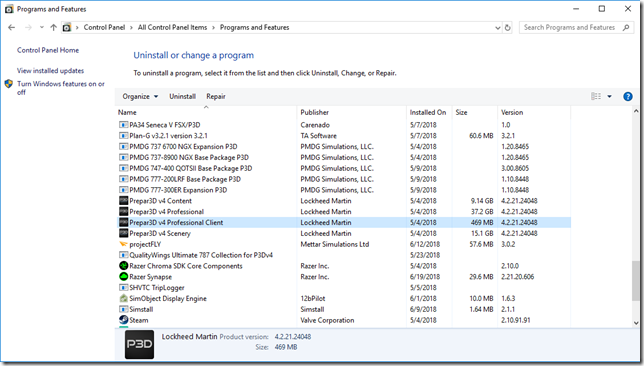
When prompted “Would you like to deactivate your P3D installation?”, Click NO!
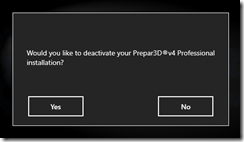
Step Four
Next, we’re going to install the updated P3D Client which we downloaded in step two. As previously mentioned, after I download all the appropriate files, I create a folder on my Windows desktop and place all the downloaded files in that folder. Right-click on the Install_Client file and select Install.
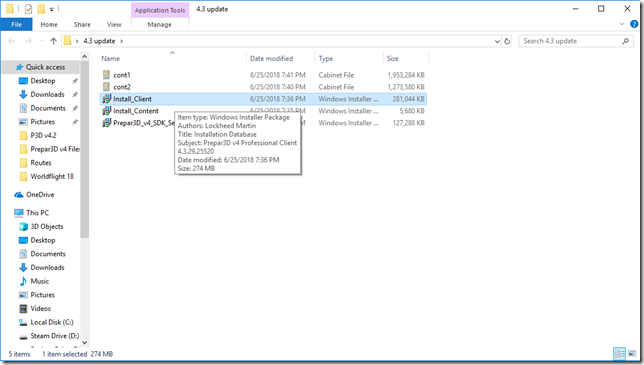
Pay very special attention during the install to make sure the updated client is being installed in your specified P3D install directory. In my example, everything defaulted in just as it should have.
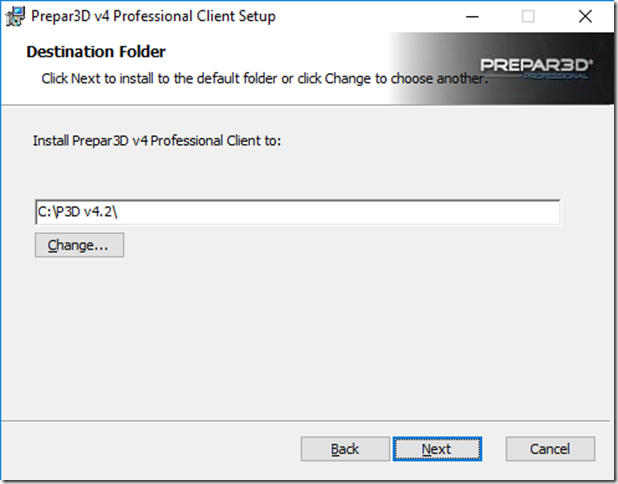
If you are planning to update the Content and/or the Scenery parts of Prepar3d, then return to step three and repeat the process but this time uninstall Content, then install Content and finally uninstall Scenery and then install Scenery.
Step Five
Pending everything installed successfully, reboot your PC. While the P3D update/install files will not prompt you or even require you to reboot, it is ALWAYS in your best interest to reboot after installing software and we’re wanting a trouble-free upgrade…so just reboot! Trust me, I’m an IT Guy!
Step Six
Once your Windows gaming PC has successfully restarted, launch P3D. Don’t be alarmed if P3D takes a little longer than normal to launch the first time. P3D is doing a lot of work behind the scenes and in my experience it took perhaps an additional 1-2 minutes than normal.
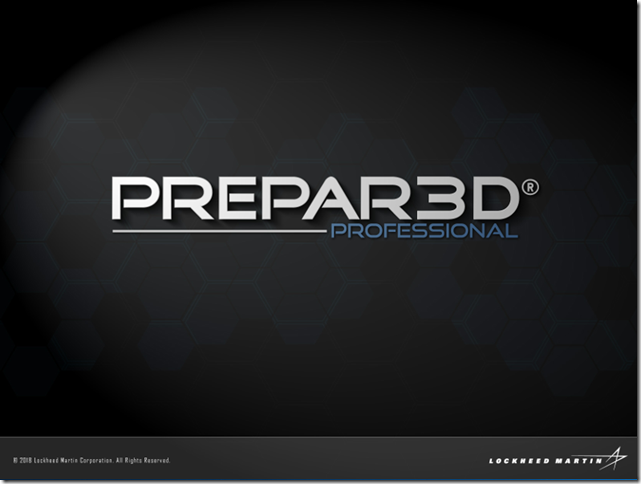
Step Seven
Hopefully your update was successful. Congratulations! Pat yourself on the back as you’ve just successfully updated P3D. At this point, I close out of P3D as I still needed to perform a few other updates to software accessories such as ActiveSky, Envtex, FSLabs Airbus etc.
Note: If you use Orbx Global Textures, you most likely will need to perform a Force Migration after performing an update. This is a very simple and quick process to complete. Just launch the FTX Central application. Go to Settings then look for Force Migration.
The End Result
Upon completing the client update for P3D version 4.5, I’m experiencing absolutely nothing but positive results. The P3D load time has slightly improved and I’m not seeing any noticeable performance degradation. From everything that I’ve seen, P3D v4.5 is absolutely fantastic and the enhanced night lighting actually has me wanting to fly more at night which I rarely would do in the past.
Benefits to Updating?
I’ve recently written and published an article I’ve titled “Prepar3D – To Update or Not To Update” which I discuss the benefits and also some of the concerns to updating P3D. Only you can decide if the benefits outweigh the risks. Of course, there’s also nothing wrong with waiting a few weeks until more of the add-ons have been updated for the newest version. What ever direction you decide to go, best of luck to you.
Until next time…
Happy Flying!!!
Jerry
 For nearly as long as we’ve been chasing the near unobtainable 60FPS in FSX/P3D, many have developed solutions and/or come up with tweaks to the .cfg file claiming/guaranteeing more FPS if you buy this or if you change that. While I’ve tried some of these over the years, I’ve just learned to laugh the rest away as simply being snake oil. If you’re unfamiliar with the term “snake oil”, it originates from far simpler times, when someone who knowingly sells fraudulent goods or who is himself a fraud, quack, charlatan etc. etc. Unfortunately, there’s just very little that can be done to P3D to increase FPS other than lowering graphics settings or investing in higher performance hardware.
For nearly as long as we’ve been chasing the near unobtainable 60FPS in FSX/P3D, many have developed solutions and/or come up with tweaks to the .cfg file claiming/guaranteeing more FPS if you buy this or if you change that. While I’ve tried some of these over the years, I’ve just learned to laugh the rest away as simply being snake oil. If you’re unfamiliar with the term “snake oil”, it originates from far simpler times, when someone who knowingly sells fraudulent goods or who is himself a fraud, quack, charlatan etc. etc. Unfortunately, there’s just very little that can be done to P3D to increase FPS other than lowering graphics settings or investing in higher performance hardware.









